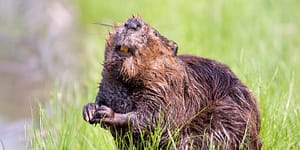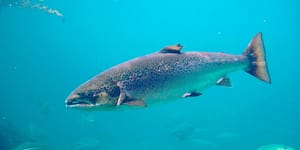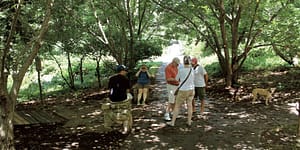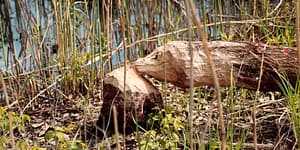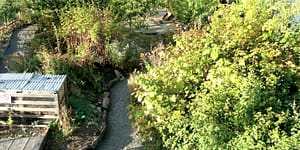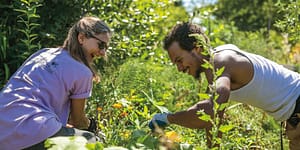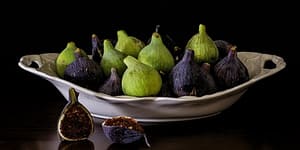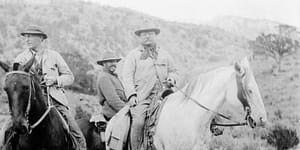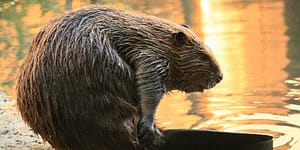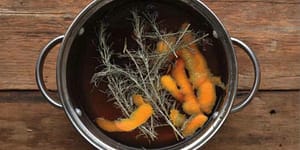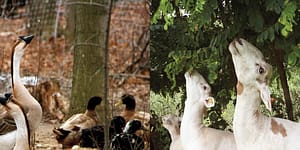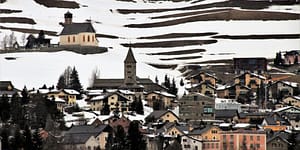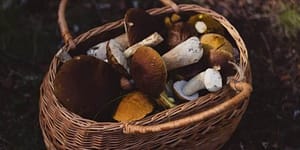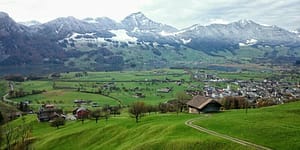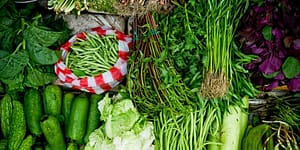Chelsea Green Blog
Nature & Environment
It’s National Book Lovers Day! Hip Hip, Hooray!
f you’re anything like us, this might be one of your favorite days of the year. To help you celebrate as only book lovers can (with a stack of tomes in your favorite reading nook), we’ve rounded up a few Chelsea Green faves – from bestsellers to staff favorites to brand new, just hit the…
Read MoreGive a Dam and Worth a Dam
If you’ve been following our blog recently, you’ve probably read about the myriad abilities beavers have. With the ingenuity to help with things like water conservation, flood damage, and wildfires beavers are one of the few species capable of cleaning up after the ecological destruction caused by humans. If you’re not a Beaver Believer yet,…
Read MoreThe Wild in Us and Us in the Wild
In the following Q&A, Martin Lee Mueller, author of Being Salmon, Being Human, discusses the importance of rethinking the human-Earth relationship, why salmon are the perfect creatures to start the conversation, and what we can do to give back. Q: Part of your inspiration to write this book came from an opinion piece about the…
Read MoreA Community Food Forest: Planning and Managing
As Benjamin Franklin stated, “By failing to prepare, you’re preparing to fail.” A good community food forest will always require robust planning but don’t let that scare you! By breaking down the work into the following five project management phases, you not only establish an initial plan you’ve also developed a dynamic system to allow…
Read MoreAppetite For Construction
Have you ever wondered why beavers build dams the way they do? Believe it or not, there is actually a method to the madness. Similar to the motives behind why humans manipulate the environment the way they do, beavers employ a strategic plan when building their dams. The animals are “among our closest ecological and…
Read MoreAgroforestry Versus Permaculture: Which Approach to Use for a Community Food Forest
Ok, so we’ve gone over some basics of community food forests: Now it’s time to figure out how to plan one. There are two schools of thought on the best approach to building a community food forest: agroforestry or permaculture. The former offers a science-based approach while the latter incorporates elements of social design. Both…
Read MoreFood Forests: What is a Community Food Forest?
The recent rise of community food forests and similar projects have come at an imperative time. More than 80 percent of the US population now resides in urban areas. This number is projected to rise in the next few decades. Not only can food forests provide a local source of food they can also serve…
Read MoreOur Favorite Summer Reads
Wondering what to read this summer? Don’t worry, we have you covered! Grab your towel and claim the best pool chair or relax at your homestead with one of these perfect summer reads. Whether its nature reads, to healing your gut, everything wild, or inspirational books you’ll have your nose in a book all summer long…
Read MoreFig Trees: Snakes and Ladders & Tantalising Figs
You ever think about how important fig trees are to ecosystems all over the world? Me neither… until I read Gods, Wasps, and Stranglers. The complex nature of these trees and their interdependence with their surroundings is beyond fascinating. “As our planet’s climate changes and reminds us that nature really does matter, the story [of fig…
Read MoreBadlands without Beavers: How Teddy Roosevelt became a conservationist
There’s no doubt that beavers offer huge support to various ecosystems. Even Teddy Roosevelt learned that when on a hunting trip to beaverless badlands turned out disappointing. This experience was enough to turn him from naturalist to conservationist. Read the full story and you too will become a “Beaver Believer.” The following excerpt is from Eager by…
Read MoreThe Surprising, Secret Life of Beavers and Why They Matter
“Beavers, the animal that doubles as an ecosystem, are ecological and hydrological Swiss Army knives, capable, in the right circumstances, of tackling just about any landscape-scale problem you might confront.” From promoting salmon populations to capturing more water for agriculture, author and “Beaver Believer” Ben Goldfarb wants us all to appreciate beavers more. A better…
Read MoreBrewing California Sagebrush Beer: The Foraging Brewer
Hyperlocal brewing, making concoctions only out of the ingredients available in your immediate environment, is a fun way to become more familiar with your surroundings and the possibilities within them. According to wildcrafting author Pascal Baudar, “the number of possible ingredients you can use is mind boggling.” And the end results can be so rewarding! The…
Read MoreSilvopasture: What in the world is it?
Have you heard of silvopasture? This system of managing grazing animals in a temperate forest ecosystem is quite common in Europe but it didn’t quite make its way over to North America with the colonists. They must not have realized the benefits of silvopasture: healthier animals, better soil, less pest control and mowing, and climate…
Read MoreVictory Over Big Ag: How a small town said “Yes!” to a pesticide-free future
A Precautionary Tale shares the inspiring story of a group of citizens in Mals, Italy who fought Big Ag and won and, in doing so, became the first place on Earth to ban pesticides by a referendum vote. Their colorful, courageous, and ultimately savvy campaign is being heralded around the world as a landmark effort in…
Read MoreForaging for Mushrooms: Gourmet Root Systems
For people who enjoy foraging for food in the wild, there are plenty of mushrooms to choose from — “ten thousand mushroom species to be considered on the North American continent alone”. But foraging for mushrooms should never be thought of as a game of chance. You need to know all the clues when it comes to identifying…
Read MoreStrong, Spicy, and Pleasant: Wild Green Kimchi
Experiment with what you have, anything from the mustard family will work extremely well.
Read MoreHow One Small Town Banned Pesticides: Freedom from Poison
Years of apparent collusion between companies producing pesticides and other chemicals and regulatory agencies such as the EPA. So how did a tiny town in Northern Italy prevail against big agriculture and make their town a pesticide-free zone?
Read MoreOrganic No-Till: Farming like the Earth Matters
If we could do one thing for the planet it would be to ditch the plough. When we turn over soil, the air and sun wreak havoc on the microbes, which is why we need chemicals to bring the fertility back. No-till creates thin furrows in the soil and drops seeds in. It’s difficult to…
Read MoreYour Baby’s Microbiome: The 10 Steps that Establish It
Research is emerging almost daily on the role of the microbiome in human health. But how do we acquire this mysterious community of microbes and more importantly how do we make sure the good bacteria outnumber the bad? According to a new book by Toni Harman and Alex Wakeford, Your Baby’s Microbiome, it all starts…
Read MoreLDN Treatment Helps to Kill Cancer Cells
According to a report in The International Journal of Oncology, giving low dose naltrexone (LDN) to cancer patients can improve the immune system’s ability to kill cancerous cells, as well as improve the efficacy of standard cancer treatments and immunotherapy. This major breakthrough gives research credence to what some doctors have observed in their cancer…
Read MoreA Mini-Festo for Earth Day – Rebuild the Foodshed
For the days leading up to Earth Day in years past, author Philip Ackerman-Leist runs a Twitter MiniFesto campaign – each day sending out a new tweet designed to spark conversation and pass along some lessons he learned whilst working on his book, Rebuilding the Foodshed. You might also know Philip as the author of…
Read More

